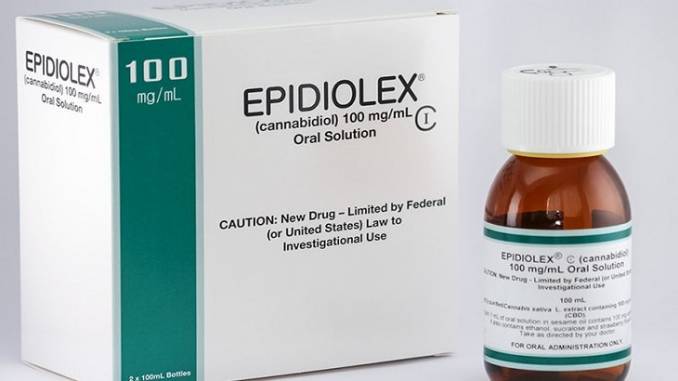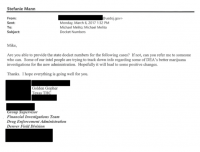According to a press release, last week GW Pharmaceuticals’ drug Epidiolex received a positive FDA panel review, which is an encouraging and important step towards getting the drug approved by the U.S. Food and Drug Administration and on the market in the United States. Epidiolex is an anti-epilepsy drug, taken in a syrup form, with the main active ingredient being cannabidiol (CBD), and less than 0.1 % THC.
 The drug is targeted to treat Dravet syndrome (DS) and Lennox-Gastaut syndrome (LGS) a rare early-onset type of epilepsy found in children, according to Reuters. FDA staff said the drug “reduces seizure frequency in patients with drug-resistant LGS or DS while maintaining a predictable and manageable safety profile.”
The drug is targeted to treat Dravet syndrome (DS) and Lennox-Gastaut syndrome (LGS) a rare early-onset type of epilepsy found in children, according to Reuters. FDA staff said the drug “reduces seizure frequency in patients with drug-resistant LGS or DS while maintaining a predictable and manageable safety profile.”
GW Pharmaceuticals, founded in 1998 and based in London, is a biopharmaceutical company that has made headlines previously for developing cannabis-derived drugs. Sativex, one of the first drugs they developed, is derived from cannabis, but was not approved by the FDA. It is however available in other parts of the world, such as the EU, Israel and Canada.
 If Epidiolex actually gets approval by the FDA, it will be the first-ever cannabis-derived drug available via prescription in all of the United States. According to Justin Gover, chief executive officer of GW Pharmaceuticals, this is a momentous breakthrough for the company. “We are pleased by the Advisory Committee’s unanimous recommendation to approve Epidiolex, which would provide an important treatment option for patients with LGS and Dravet syndrome, two of the most severe and treatment-resistant forms of epilepsy,” says Gover “This favorable outcome marks an important milestone in our company’s unwavering commitment to address the significant unmet need for patients with LGS and Dravet syndrome and our resolve to study Epidiolex under the highest research and manufacturing standards. We look forward to our ongoing discussions with the FDA as it continues to review the Epidiolex NDA.”
If Epidiolex actually gets approval by the FDA, it will be the first-ever cannabis-derived drug available via prescription in all of the United States. According to Justin Gover, chief executive officer of GW Pharmaceuticals, this is a momentous breakthrough for the company. “We are pleased by the Advisory Committee’s unanimous recommendation to approve Epidiolex, which would provide an important treatment option for patients with LGS and Dravet syndrome, two of the most severe and treatment-resistant forms of epilepsy,” says Gover “This favorable outcome marks an important milestone in our company’s unwavering commitment to address the significant unmet need for patients with LGS and Dravet syndrome and our resolve to study Epidiolex under the highest research and manufacturing standards. We look forward to our ongoing discussions with the FDA as it continues to review the Epidiolex NDA.”
According to the GW press release, the Peripheral and Central Nervous System Drugs Advisory Committee of the FDA unanimously recommended supporting the approval of the New Drug Application (NDA) for the drug. That advisory committee is sort of like an independent panel; their unanimous vote doesn’t necessarily mean the drug will get approved, but the FDA takes their decision into consideration when approving new drugs. So this panel recommendation is certainly a good sign and shows this drug could potentially be on the path to FDA approval.














